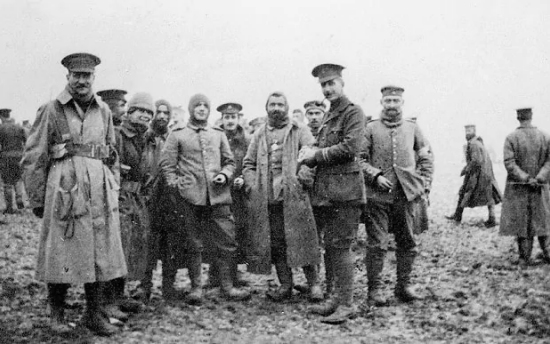
It’s Christmas time again, and I am in the midst of preparing for many things, including the Christmas Eve service at church. I have been asked to do a short skit about Christmas. You can find some of my past attempts at dramatizing Christmas here, here, here, and here. The one I am doing for this year’s Christmas Eve service is much shorter, and it focuses on a remarkable event that happened during World War I: The Unofficial Christmas Truce of 1914. I think it illustrates the “peace, good will toward men” aspect of Christmas in a very tangible way. Parts of the drama (like the first four sentences) come straight from letters written by soldiers who participated in the event.
Ideally, the person doing the skit should be dressed in something like World War 1 gear. Honestly, a helmet and a long, ratty green coat over khaki pants would probably be good enough. An old-style rifle propped up next to him would be ideal. He should be sitting on a small stool or something like that (I will be sitting on one of the stairs that are on stage) and writing a letter.
As is the case with all of my dramatic material, please feel free to use this in any way you think might edify the Body of Christ. I would appreciate a credit, but there is no copyright on this piece.
Merry Christmas.


